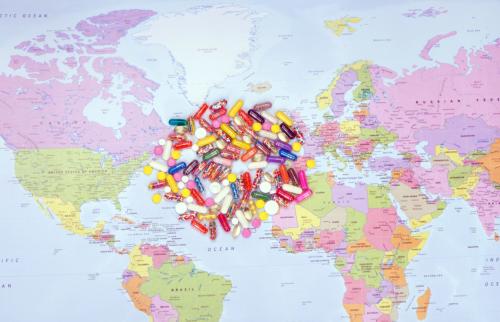As the world braces for an autumn wave of swine flu (H1N1), the relatively new technique of agent-based computational modelling is playing a central part in mapping the disease’s possible spread, and designing policies for its mitigation.
Classical epidemic modelling, which began in the 1920s, was built on differential equations. These models assume that the population is perfectly mixed, with people moving from the susceptible pool, to the infected one, to the recovered (or dead) one. Within these pools, everyone is identical, and no one adapts their behaviour. A triumph of parsimony, this approach revealed the threshold nature of epidemics and explained ‘herd immunity’, where the immunity of a subpopulation can stifle outbreaks, protecting the entire herd.
But such models are ill-suited to capturing complex social networks and the direct contacts between individuals, who adapt their behaviours — perhaps irrationally — based on disease prevalence.
Agent-based models (ABMs) embrace this complexity. ABMs are artificial societies: every single person (or ‘agent’) is represented as a distinct software individual. The computer model tracks each agent, ‘her’ contacts and her health status as she moves about virtual space — travelling to and from work, for instance. The models can be run thousands of times to build a robust statistical portrait comparable to epidemic data. ABMs can record exact chains of transmission from one individual to another. Perhaps most importantly, agents can be made to behave something like real people: prone to error, bias, fear and other foibles.
The Brookings Institution is committed to quality, independence, and impact.
We are supported by a diverse array of funders. In line with our values and policies, each Brookings publication represents the sole views of its author(s).



Commentary
Modelling to Contain Pandemics
August 6, 2009